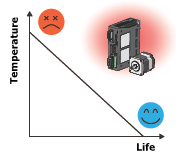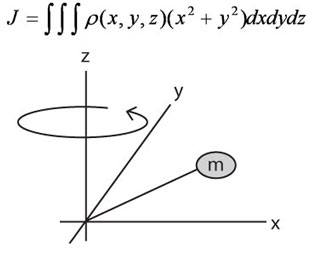When a voltage is applied to an AC induction motor, it runs at a certain speed. Variable speed requirements for AC induction motors are typically fulfilled by a 3-phase motor and an inverter or VFD. This blog post also introduces another option.
Welcome to Oriental Motor's "Engineering Notes" Blog:
Products and technology are only valuable when coupled with skilled people and services to support them. Since 1978, ORIENTAL MOTOR U.S.A. CORP. has been building a service and support system to better serve customers. It is our goal to provide the best product and service from the design phase, through the sale and beyond.
Our blog will feature:
- Introduction to new products and technologies
- Motion control basics and application examples
- Tips for motor selection, programming, and troubleshooting
Speed Control Basics: VFD or Triac for AC Induction Motors?
Topics: AC Motors, Speed Control, Motion Control Basics, Conveyors
What Makes Three-Phase Motors Better for Instantaneous Forward/Reverse Operation?
The differences between single-phase and three-phase AC induction motors don't stop with the input power supply. There are a few things you need to know when using AC induction motors in an instantaneous forward/reverse operation.
Topics: AC Motors, Speed Control
Grounding Basics: What are the Differences Between PE and FG?
Topics: AC Motors, Stepper Motors, Alphastep Hybrid Control, Linear Actuators, BLDC Motors, Servo Motors, Cooling Fans, Motion Control Basics
Knowing how to use a product properly can make a huge difference in its performance and life. For example, knowing how to maintain cast iron pans properly can make them last longer. With electric motors, understanding the factors that affect motor life is the first step to extending life and decreasing costs in the long run.
Topics: AC Motors, Stepper Motors, Linear Actuators, Speed Control, Servo Motors, Service Life
Oriental Motor offers many pre-assembled geared motors for quality, consistency, and reliability. In addition, gearheads from our industry partners increase the torque range of our motors further to accommodate more applications. Here are some advantages of geared motors.
Topics: AC Motors, Stepper Motors, Absolute Positioning, Alphastep Hybrid Control, BLDC Motors, Gearheads, Application Examples, Rotary Actuators/Index Tables
Control Basics: The Difference Between Sink and Source Logic
For someone who has never had experience wiring I/O for motion control, it can be scary the first time. If devices are not wired correctly, it can cause a range of issues from a motor simply not doing what's expected to irreversible product damage. I still get that nervous feeling before I press the START button on a demo. Murphy's Law, anyone?
Topics: AC Motors, Stepper Motors, Alphastep Hybrid Control, Linear Actuators, Speed Control, BLDC Motors, Servo Motors, Motion Control Basics
Motor Sizing Basics Part 4 - How to Calculate Radial Load and Axial Load
Besides load torque, acceleration torque, speed, and load inertia, overlooking certain sizing parameters during the motor sizing process can literally make or break your machine.
Topics: AC Motors, Stepper Motors, Speed Control, Motor Sizing, BLDC Motors, Gearheads, Servo Motors, Motion Control Basics
Motor Sizing Basics Part 3: How to Calculate Speed, Acceleration Torque, and RMS Torque
Now that we understand the calculations behind load torque and load inertia, we're a little closer to motor selection. You might be wondering why I separated load torque and acceleration torque calculations. That's because in order to calculate for acceleration torque, load inertia and speed must be calculated first.
Topics: AC Motors, Stepper Motors, Alphastep Hybrid Control, Linear Actuators, Speed Control, Motor Sizing, BLDC Motors, Servo Motors, Motion Control Basics
Motor Sizing Basics Part 2: How to Calculate Load Inertia
Topics: AC Motors, Stepper Motors, Alphastep Hybrid Control, Linear Actuators, Speed Control, Motor Sizing, BLDC Motors, Gearheads, Servo Motors, Rotary Actuators/Index Tables, Motion Control Basics
Motor Sizing Basics Part 1: How to Calculate Load Torque
Proper sizing of a motor requires that 3 criteria must be met: torque, load inertia, and speed. For the first part of this Motor Sizing Basics series, I will be explaining what load torque is, how to calculate it for specific application examples, and how it fits into the torque requirement for the application.
Topics: AC Motors, Stepper Motors, Alphastep Hybrid Control, Linear Actuators, Speed Control, Motor Sizing, BLDC Motors, Servo Motors, Rotary Actuators/Index Tables, Motion Control Basics, Conveyors









